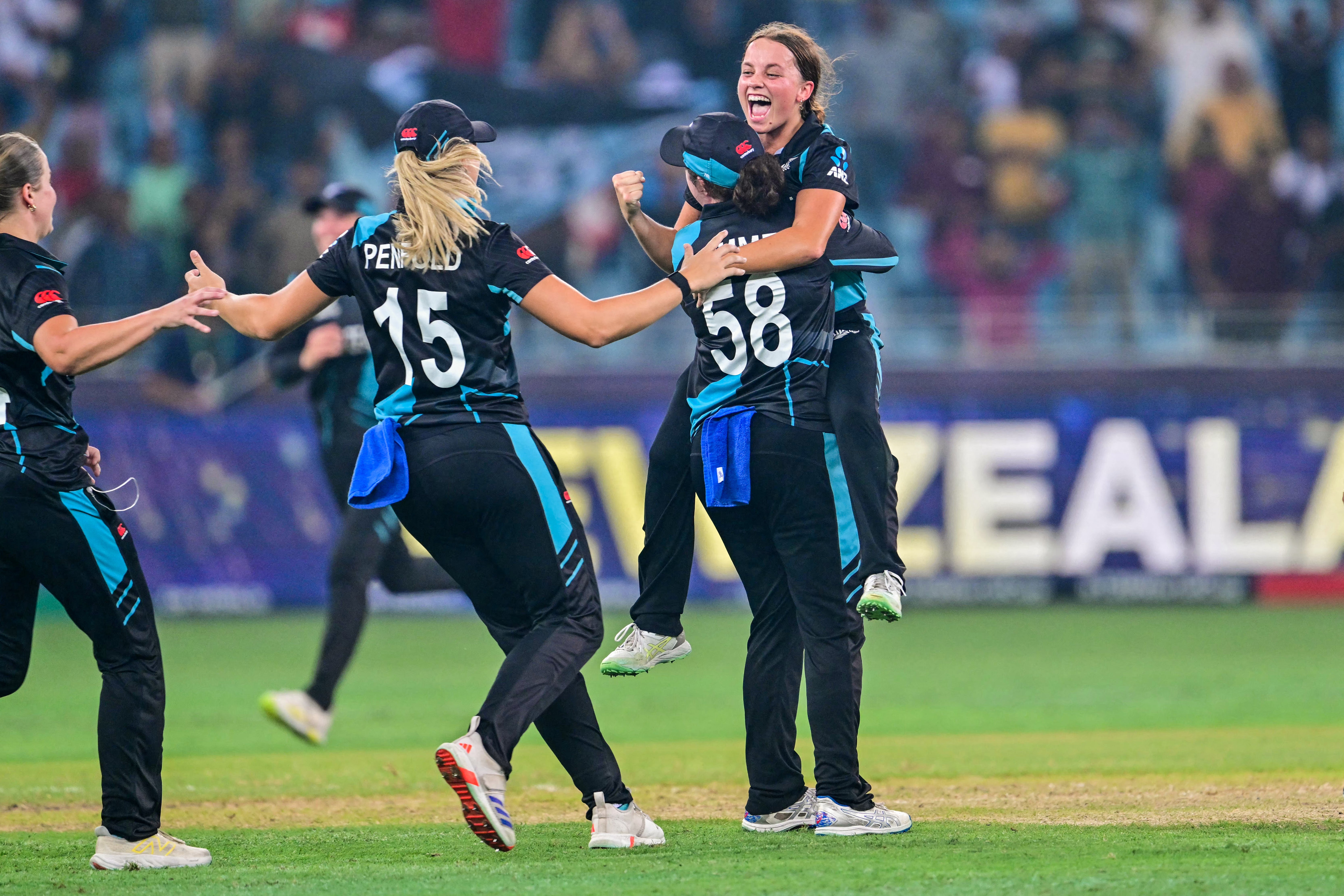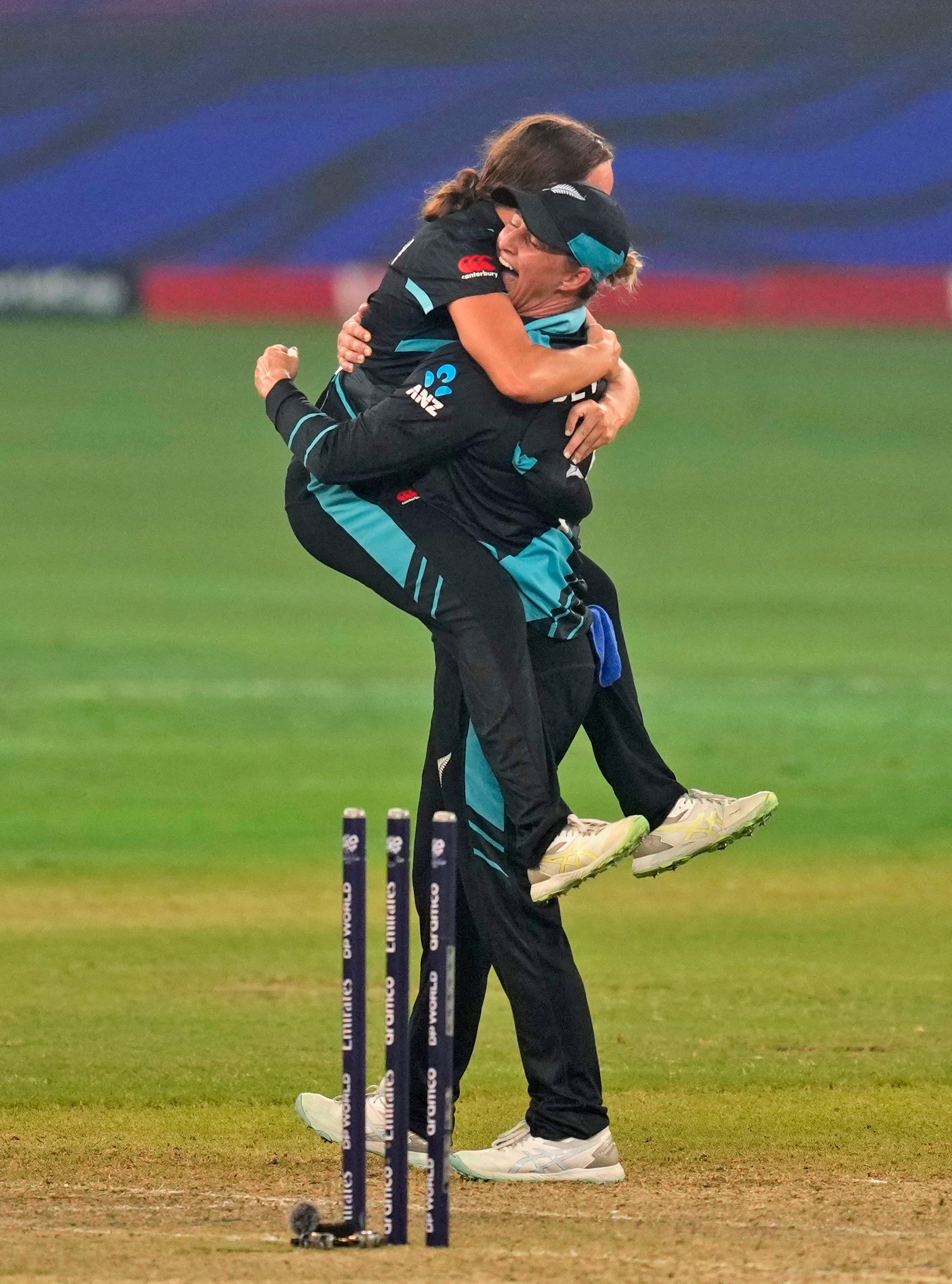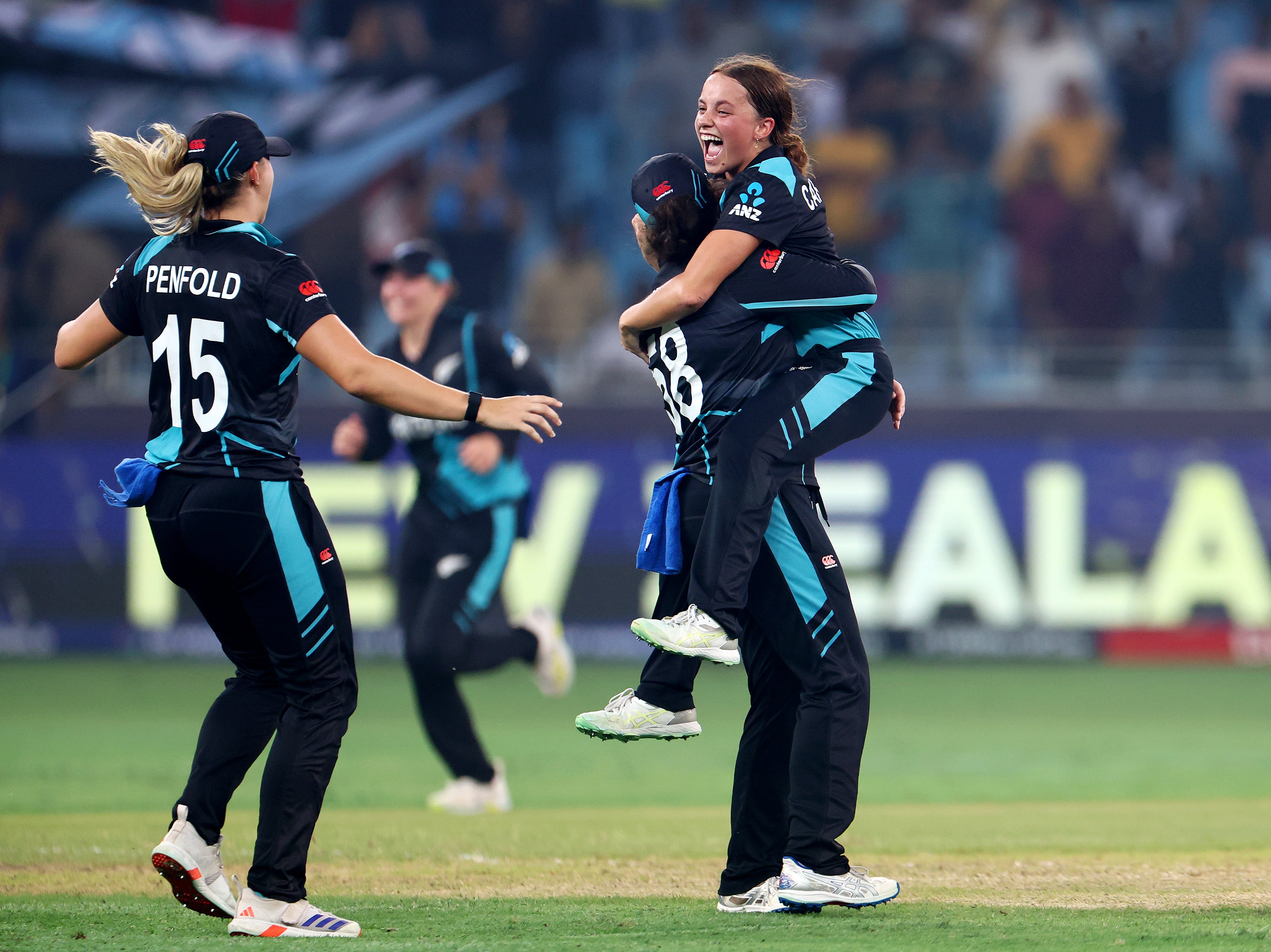New Zealand’s historic T20 World Cup suggests a change is coming in women’s cricket
The White Fearns beat South Africa in the Women’s T20 World Cup final to become champions for the first time

The tournament of the shock result ended with a brand new world champion: New Zealand.
“This means everything to us,” said Suzie Bates, who made a record-breaking 334th appearance for the White Ferns, becoming the most capped international women’s cricketer in history.
“We’ve played team sport for so long and when you play team sport you want to be world champion and we’ve fought our way to the top. Sophie Devine has been outstanding leading this team. She’s been so calm and believing in us. We’ll probably have a cuddle later as there’s been some dark times that only those in that group [know] when we couldn’t get a win coming into this World Cup. We questioned ourselves but she backed us.
“I’m just in shock, really. Things have gone our way. Whatever happened today I’m just so proud.”
Before a ball had even been bowled it was an historic final, as for the first time in the history of the women’s game, it featured neither Australia nor England.
Australia had been thrashed by South-Africa in the semi-finals, while England had suffered a shock defeat at the hands of the West Indies which knocked them out in the group stages. Add in India not making the semi-finals either and on paper it has been a tournament that suggests the gap between the best and the rest is closing.
But the reality isn’t so clear. England and Australia were knocked out after one-off aberrations in a tournament where they had otherwise been dominant. Across 2024, England and New Zealand played 16 matches against one another and England won 14. In the lead up to the World Cup, the Kiwis had lost 10 consecutive matches against England and Australia combined. Australia’s record against Pakistan, for instance, reads played 30, won 30.
Today’s result notwithstanding, there is a performance gulf between the haves and the have nots in women’s cricket. When you consider the resources that are available off the pitch, the gulf becomes a chasm.
“Honestly speaking, we probably just don’t have it like a lot of the rest of the teams,” said West Indies captain Hayley Matthews after their semi-final loss to New Zealand. “Back home in the Caribbean, sometimes we don’t have facilities and a lot of our girls come from very humble beginnings.
“To be given this opportunity to come out, represent your nation, and make a living out of it, for every single person it changes their lives.”

This tournament proved that the rest are capable of being the best. A new World Champion proves that. But it is a result that is by accident rather than design. It is evidence of the need for further funding of the global game, as opposed to things being on the right track.
It is no coincidence that Australia, England and India are historically the best-resourced nations in the world and also the best at the game.
After New Zealand lost the 2009 T20 World Cup final to England, where they were bowled out for 85, their head coach said it was like “amateurs vs professionals.” The White Ferns were ranked second in the world at that time, but had lost seven consecutive matches to England.
One match report afterwards stated that the biggest threat to the women’s game was the prospect of England, who at that stage came the closest to any country in the world to paying their players, dominating for decades to come as they invested in the game in a way that no one else did. The report also noted that Australia had launched a “lite” version of what England were doing. They were the only two nations to be making financial contributions to their players and - until today - one or the other had been in every single World Cup final.

Compare that to South Africa, who have reached the last two World Cup finals, but are still waiting for the launch of their own women’s T20 league. The men’s SA20 began in 2023; they ‘plan’ to launch the women’s in 2026.
In early 2009, New Zealand lost their captain Haidee Tiffen, in part due to a lack of funding that forced her to turn her back on the game. In 2022, New Zealand cricket made an historic move when they announced they’d pay both their male and female players the same match fees.
“It’s a massive step forward and will be a huge drawcard for young women and girls,” said White Ferns captain Sophie Devine at the time.
Devine and her teammate Bates played in that 2009 final as amateurs. They played again in the 2024 final today, as professionals, and left as World Champions. Investment pays off.
Join our commenting forum
Join thought-provoking conversations, follow other Independent readers and see their replies
Comments

Bookmark popover
Removed from bookmarks